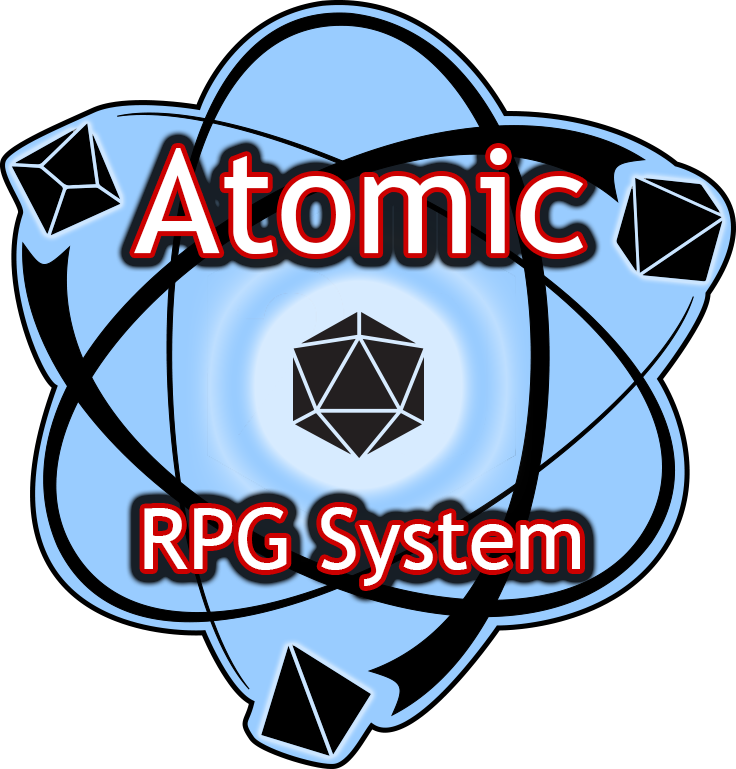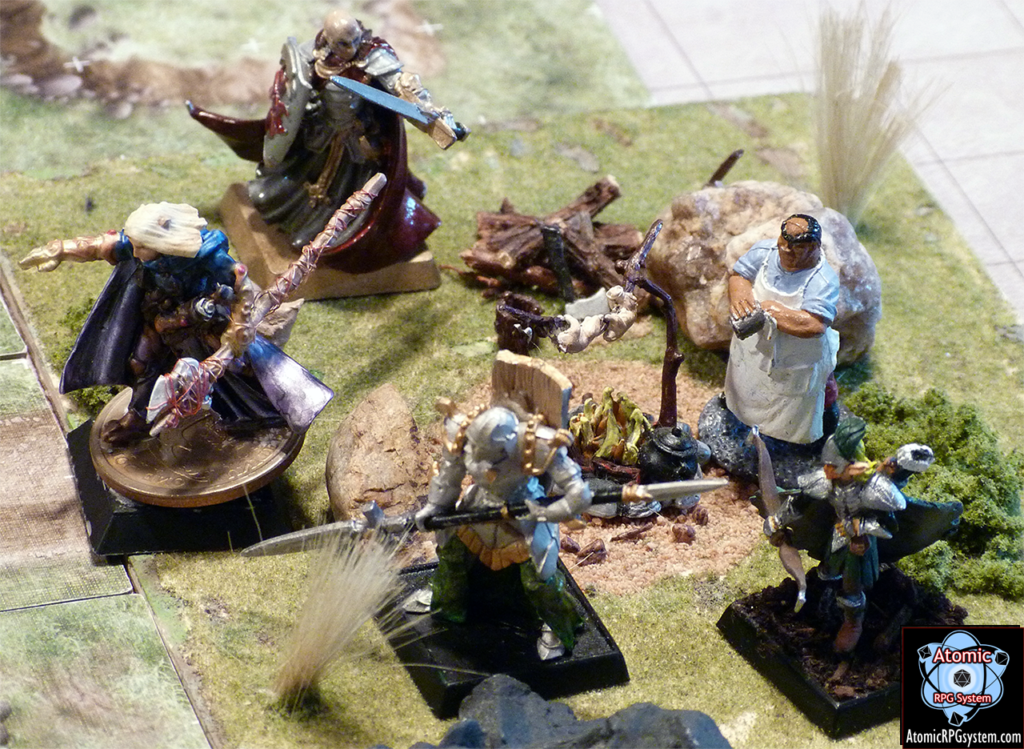
There is more to creating awesome player characters than you might think. Creating a new character for a new tabletop RPG game from scratch can be difficult. This can be especially difficult if you are entering into a game world that you do not know a lot about. Couple the unknown setting with the nearly infinite possibility of the Atomic RPG System and the task can be quite daunting.
Don’t worry though; we will give you a few simple tips and tricks to start your character so it can fit into whatever your Game Master has in mind.
It is almost always better to build the roleplay of the character prior to creating the stats for them. In some games this may be difficult, but it isn’t with the Atomic RPG System. The Atomic RPG System is specifically designed for the best way to create an awesome player character. This character will have the ability to adapt to the campaign, grow with the story, level up along with the player, and become an epic hero of the campaign.
Why the roleplay approach? This creates a deep and intimate connection between the player and their character. This understanding causes the player to be far more vested in the character, ergo far more vested in the game! Players that are more invested in their own RPG tabletop game will make for a far better RPG experience for everyone present.
One last note before we get started. This guide is designed for players who want deep, colorful, adaptable, and powerful characters in the world in which they play. It is assumed that these characters will take part in at least a short campaign. Hopefully, this helps you create an awesome character that you can play for years and years.
Steps to Creating Awesome Player Characters
for Tabletop RPGs
Step 1: What is the setting?

This is where character creation begins in RPGs when creating awesome player characters. The first and most important step is to know the setting in which you’ll be playing. If you don’t know, ask your GM. Get as many details as possible. It is even a good idea to ask what kind of characters might fit well into the game.
- What is the time period or genre?
- What level of technology is available?
- What are some of the big social norms?
- What races, ethnicities, or professions are available for characters?
- What types of characters are common? Fighter, Mages, Hackers, etc.
The GM should be able to answer these questions for you in detail.
Step 2: Basic Character Concept
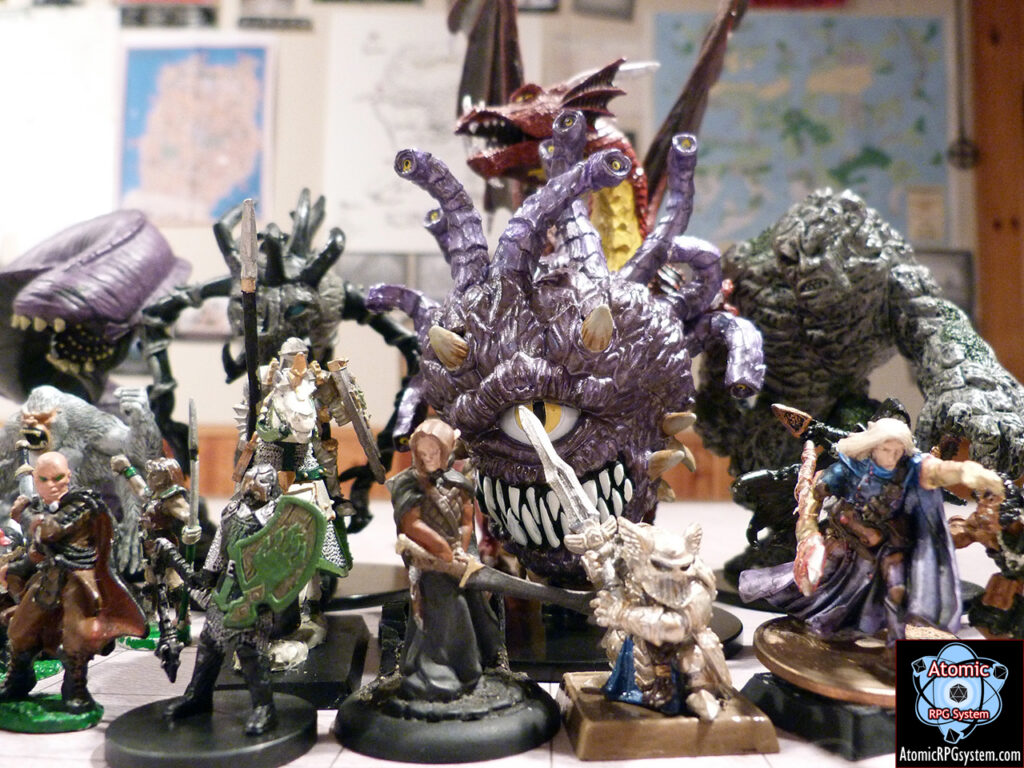
What do you want your character to do? What types of things interested you as something you and your character might want to do? When creating awesome player characters they should have a sound concept that will hold up through a variety of in-game situations.
Does becoming a warrior for the king’s army sound like fun? What about being traveling nun preaching the gospel and healing the sick? Perhaps a computer hacker or a cyborg implant trader piques your interest?
Then ask yourself these quick questions.
- Does this idea sound interesting?
- Is it something that you could play for a long time?
- Can you see a future for this character?
- Does it fit into the setting?
If you answered yes to all of these questions, move onto figuring out more about your character in the next section.
If you didn’t answer yes to all of the above questions, ask yourself the following questions.
- Will the character be shunned by fellow players?
- Will the character be shunned by fellow characters?
- Will the character be killed on sight in the setting?
- Is this character just to annoy Josh (Or anyone else at the table)?
- Do you want to make this character just because you can?
If the answer is yes to any of the follow-up questions, it is a good idea to come up with a different character concept. It is unlikely to work out in the long run or cause problems with the game.
Step 3: Character Foundation
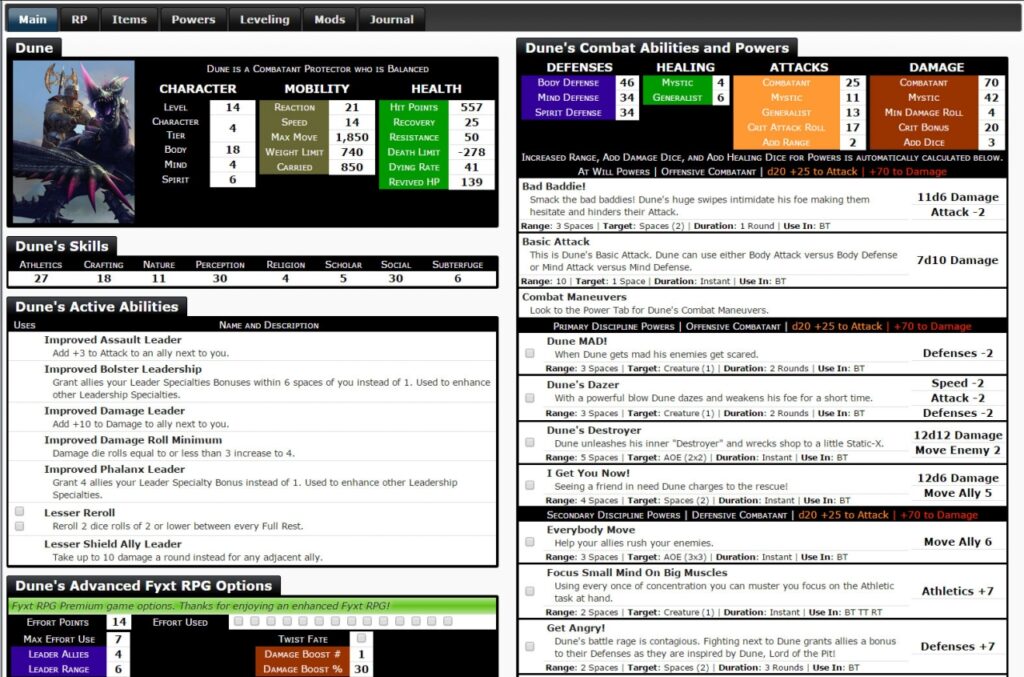
Now that you have vetted a character concept, it is time to ground that concept in roleplay details. Creating awesome player characters takes a little time to work through the details to make sure the concept is sound. Plus you want to have a character that is believable and likeable. This will make it fit much more naturally into the setting.
Answer these questions and any other questions that might arise from your answers.
- What in my character’s life made them want to become the concept?
- What struggles in my character’s life did they overcome to become the concept?
- Why does my character want to be the concept?
- Do they have family, friends, or other acquaintances?
- What drives my character to the concept?
- What are my character’s goals?
- Why will this character concept risk life and limb as an adventurer?
What we are looking for here are some finer details about the backstory and life of this character. Knowing this information helps the player control and act as the character. It will also be very useful in helping the player to figure out the specifics of what their character’s stats and numbers will be.
Some simple examples are:
- The youngest son seeking glory in the army like their big brother.
- Out to prove they can make it in the cruel hard world.
- Seeks knowledge and is fascinated by technology.
- Growing up starving in poverty, they seek wealth and seek to end suffering.
- Partnering up with best friend to bring acrobatic entertainment to the masses.
This doesn’t have to be a very detailed background. Just a rough and basic background is enough to tell you where the character concept originates, why it is what it is currently, and what the character wants for the future.
More can be added as you play, but starting out with some detail will provide everyone at the table a better understanding of your character, making the experience more rich and fun.
This isn’t to say that you should go hog wild, trying to create power, strength, and prestige into a backstory. In fact, that is a common mistake too many players make and too many GMs allow. One of the major goals of gaming is to take a normal and ordinary character and make them extraordinary. A character should never be “the best” or “the leader” of anything to start with. It is a worthy goal, but a player should never start there. Be wary if a GM allows this because it is very likely to be taken away post haste.
Keep in mind that having some vague details can be good. It can give the GM, or you at a later date, the ability to “fill in the blanks” as if your character was always meant to fit into the story in that manner. So leave some areas vague and mysterious as it may come in handy as the campaign story progresses.
Step 4: Part of a Group
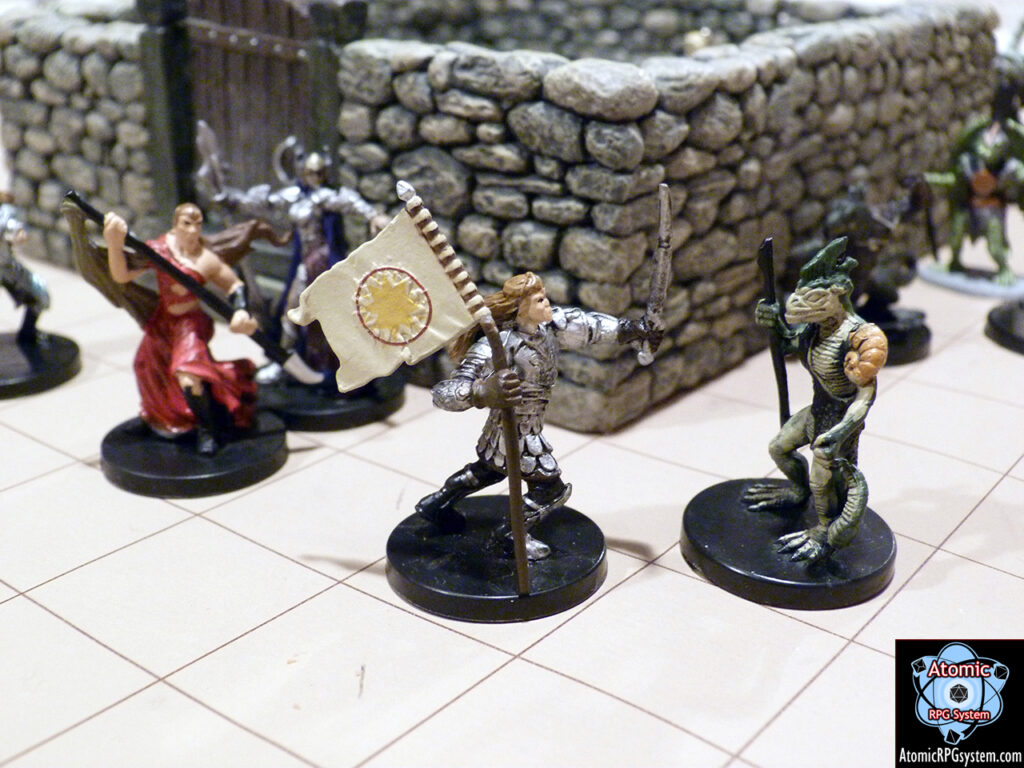
Tabletop roleplaying games are all about a group working together. So this is a vital question you have to ask yourself: Does my character want to be part of an adventuring party? If the answer to this is a resounding no, it’s time to start over. Characters need be motivated to be a member of an adventuring party.
A character only needs a bit of a reason to be an adventurer and join a party. Here a few basic motivations for a character to be a part of and work with a group:
- Help others
- Seek knowledge
- Seek adventure
- Seek prestige
- Out to prove something
- Serve their nation
- Serve an organization
There are many great reasons to be a member of an adventuring party. There are also some bad reasons. Try to avoid some of these common motivations that cause troubles:
- Exploiting others
- Forced to serve
- Undermine others
- Double agent
- The Chosen One
Step 6: Creating Awesome Player Characters' Stats and Abilities
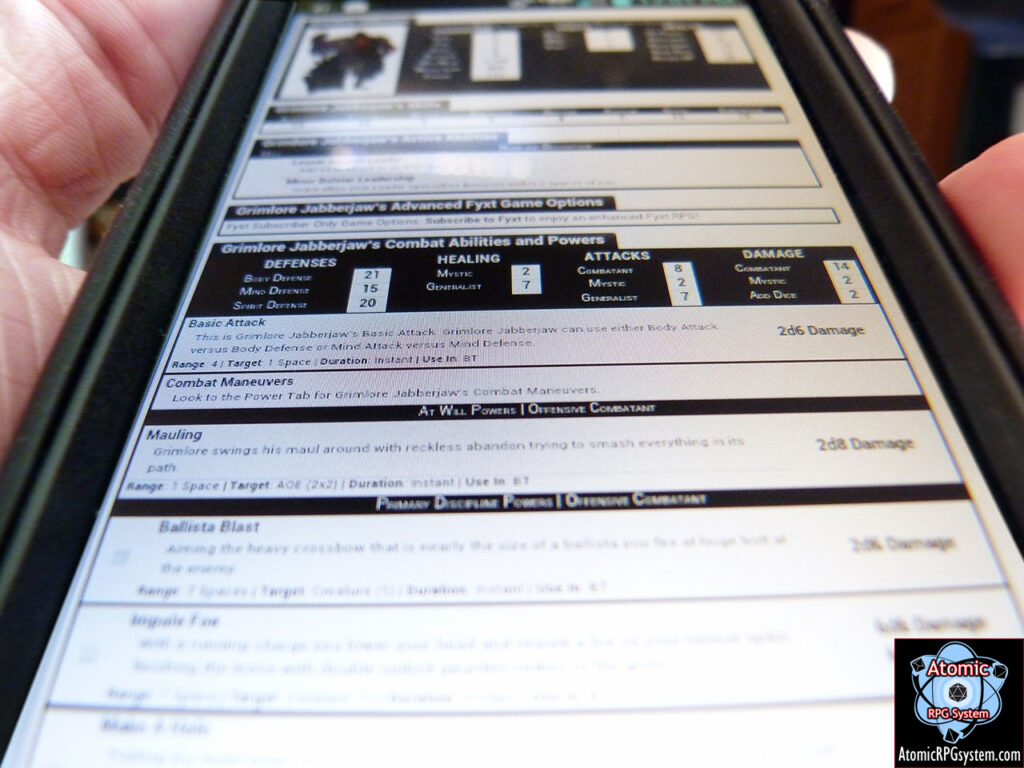
You have now taken the proper steps to think through a character concept that will be fun for you, entertaining to play, and work well with the group. Now is the time to figure out what stats you will actually create! You might not have expected the last step of creating awesome player characters to be the character sheet creation itself. But it should be.
Using all of the information and preferences you have gathered, you should be able to put together a character that fits right into your concept. With the Atomic RPG System you can literally create every little piece al-la-carte to tune your stats into your exact character concept. In addition, you will be able to tweak and adjust every piece of your character as you play. This will be an inevitable step as you fit into your roles in the group. Adjustments will also need to be made to fit your character tighter into the GM’s campaign, once you have a few adventures under your belt.
If you are playing a different system, you will need to follow their guidelines for character creation. However, with a solid character concept, you should be able to find something that fits in the ballpark of your character concept.
If you are brand new to the Atomic RPG System, follow this quick flow chart to get your character started. Use this handy character generator to get started. Click to Create New Character Generator! Keep in mind that all character choices can be changed. Nothing is “locked in”. Characters can always be changed and adjusted in the Atomic RPG System.
Step by Step Guide to the New Character Generator
- Select your character Archetype. (Determines area of expertise.)
- If you want mostly combat based abilities and Powers, select Combatant.
- If you want mostly mystical based abilities and Powers, select Mystic.
- If you want a mix of combat and mystical abilities and Powers, select Generalist.
- Select your character Style. (Determines Character Build Bonuses)
- If you want your character to be good at attacking things, select Aggressor.
- If you want your character to be good at defending against attacks, select Protector.
- If you want your character to be good at skills, select Neutral.
- Select your character’s Focus. (Determines Power Point Distribution)
- If you want to be awesome at one thing, select Devoted.
- If you want to be great at a few things, select Focused.
- If you want to be good at many things, select Balanced.
- Click green button to Auto Assign Trait Points.
- Select your character’s two best Skills.
- Select your character’s combat preferences.
- Select Primary Discipline Aggression. (Primary Character Powers aka Abilities)
- This should match your Character’s Aggression.
- Select Secondary Discipline and Aggression.
- Choose Offensive (Harm Enemy) or Defensive (Help Ally).
- Choose which effects the secondary abilities can have.
- If not Devoted, select Tertiary Discipline and Aggression.
- Choose Offensive (Harm Enemy) or Defensive (Help Ally).
- Choose which effects the tertiary abilities can have.
- Leave cash at 2500, the normal starting cash.
- Select a Specialty.
- Add as much of your character concept as you can inCharacter Description.
- Click Create a New player Character.
- From the Character Sheet select the Powers tab and click Edit Powers.
- Scroll below to find the suggested Powers for your character in the drop downs.
- Add Powers to your character which match your concept until your Power Points are mostly spent.
- If there are no listed Powers that match your character concept, click on Custom Power Generator to create the Power you want.
I hope you can see the advantages of the tips presented here. These come from many years of gaming experience in watching not only my own characters fail or succeed, but those in the games I run as well. Using this process for creating awesome player characters will really help you make amazing characters that have the depth and personality to be the heroes we want them to be. They will also be the characters that we talk about long after we are done playing them. This process brings them from just a name to being a memorable and interesting entity of their own. They will naturally fall into situations and rolls to help make the roleplay game they are in the best it can be. And that’s the ultimate goal of all of this, to have more fun with better characters!
This is just to get you started. Keep checking back as we have plans to add roleplay generators to AtomicRPG.com to kick start your character onto a path to awesomeness!
